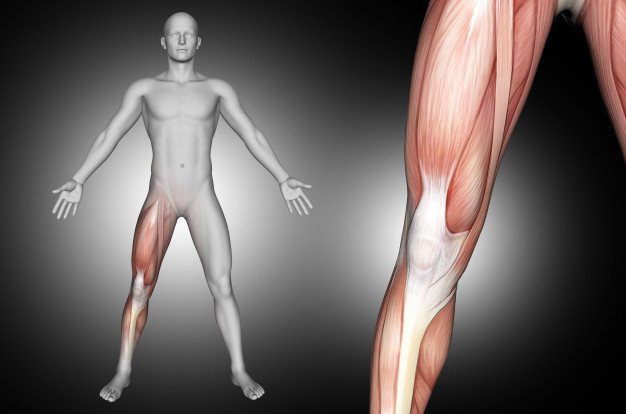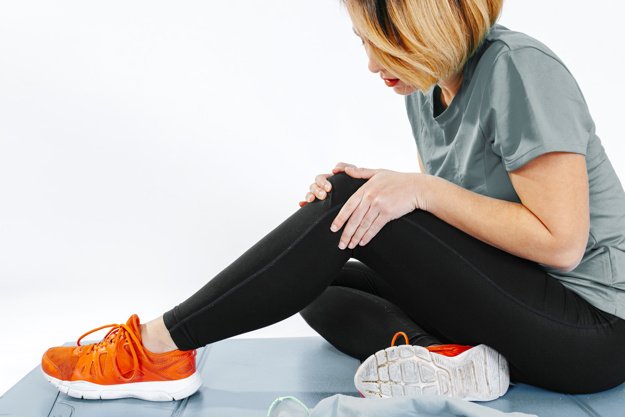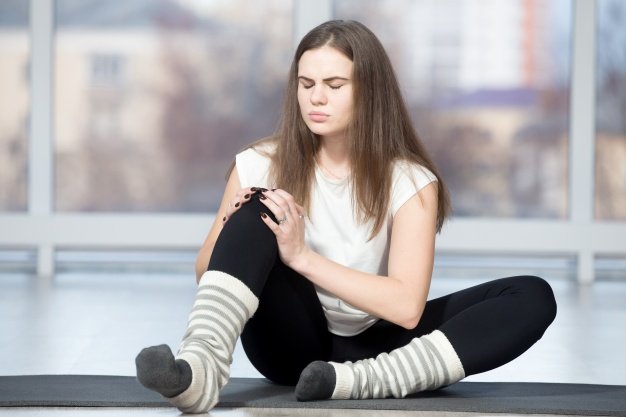Menu
Our knees play a significant role in our daily lives and also one of the most complex joints in our body. According to the American Academy of Pain Medicine, 1 out of 5 people experience knee pain, which can bring discomfort and hinders the way they perform daily tasks.
Strengthening the knees can be helpful to those suffering from knee pain; that's why incorporating stretches for knee pain can be an excellent way to improve the nagging pain. In this article, you'll understand how knee pain happens, what causes it, and what are the best stretches to relieve it.

Your knee is a hinge that joins the large bone in your femur (thigh) to the tibia (shin bone) and patella (knee cap). It can also straighten, bend, and rotate slightly. Ligaments, muscles, and tendons located in the calves and thighs provide mobility and support on your knees. Since the knees bear a lot of weight all the time, no wonder it is subject to stress every day.

The knee is susceptible to plenty of trouble like a minor injury, or strains that, in no time, can turn into major concerns that require medical attention. That's why it's essential to recognize the causes of your pain before it gets worse.
Knee pain is usually caused by:
Joint pain characterized by inflammation and stiffness can be a result of arthritis, commonly osteoarthritis, and rheumatoid arthritis. If not addressed right away, it could lead to reduced mobility.
Medial or lateral menisci protects the bones in your knees. If it's torn, you'll experience swelling and pain in the area. Although minor tears heal in no time, severe damages may need necessary surgery.
If you engage in sports, ligament tear is one of the most common injuries you'll get, and it involves the anterior cruciate ligament. Surgery is necessary to recover from this injury; otherwise, the ligament tear will destabilize the knee, making it even worse.
Runner's knee happens around the kneecap resulting from high-intensity exercises, intense collision, or bone misalignment. Symptoms often solve on their own if rested.
A misaligned kneecap can limit your mobility, weaken the knee joint, or even lead to pain or bruising. Minor kneecap dislocations can easily be treated with ice, compression, and getting enough rest. In contrast, severe cases may need appropriate surgery.

Even those perfectly healthy individuals still suffer from knee pain, but do you know that certain factors can generally affect your knee's health and how you encounter levels of pain? These factors include:
Excess weight adds pressure and stress on your joints, such as your knees.
As you age, developing arthritis is a common problem. People below 40 years old rarely experience these concerns.
Lack of physical activities, such as flexibility and strengthening exercises, can increase the risk of knee injuries. Strong muscles help stabilize the joints, helping you achieve a full range of motion.
If you had a previous knee injury, it would likely come back and injure your knee again.
Smoking is detrimental to the body and overall health and even contributes to chronic pain, which includes knee pain.
In standing, place your foot up on a wall, staggering the opposite leg behind. Lean forward until you feel a stretch in your calf. Hold the position for 10-15 seconds. Repeat 3-5 times.
Place your leg on an object in front of you, 6-8 inches off the ground. Gently lean forward at the hips until you feel a gentle stretch. Hold the position for 15-20 seconds and repeat 3-5 times.
Kneel on your knee and place the opposite leg out in front. Make sure you're at a 90-degree angle with both legs. Lean forward at the hips until you feel a gentle stretch. Hold the position for 15-20 seconds. Repeat 3-5 times.
Begin by standing straight up, cross your leg (the one you want to stretch) behind you. Keep your legs straight and bend down towards the floor until you feel a gentle stretch. Hold the position for 15-20 seconds. Repeat 3-5 times.
Use a single hand to balance while holding a chair, kneeling or facing the wall. Grab your ankle with your opposite hand. While bending your knee, pull your foot carefully towards the buttocks. Maintain a straight stretch and avoid pulling your foot to one side or the other. Hold the position for 15-20 seconds and repeat 3-5 times.
Weak muscles can lead to knee pain, that's why building up your hamstrings by doing strengthening and stretching exercises help your muscles work together more efficiently. You can alleviate any symptoms by incorporating flexibility exercises such as these easy stretches for knee pain. And if you're knee pain won't still fade, seek medical attention as early as possible.